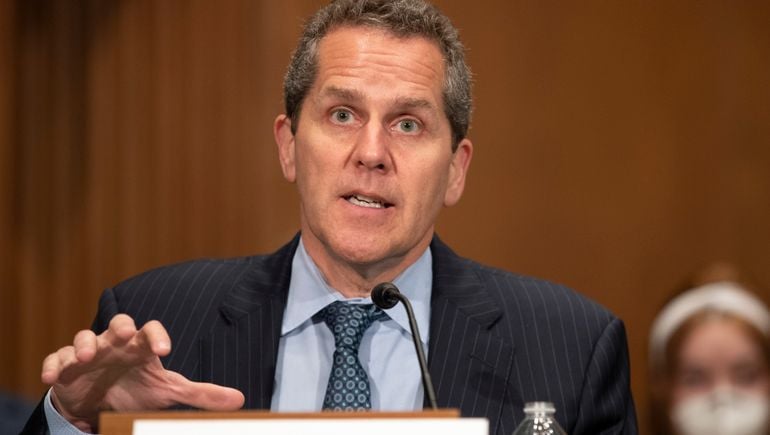Michael Barr, the Federal Reserve’s vice chair for supervision, asked banks to review and analyze data that might fuel racial disparities in wealth, while speaking Tuesday at a conference on financial inclusion at a historically Black university.
“Ensuring that all would-be borrowers are treated equally means more customers, more loans and better returns for banks,” Barr said in a plea for banks to “do all they can to eradicate discrimination in lending.”
“It is incumbent on financial institutions to devote resources to stamp out [discriminatory] practices, and on regulators to reinforce the importance of this goal through supervision and enforcement,” Barr said Tuesday at Jackson State University in Mississippi.
Barr encouraged banks to “look for opportunities to support a vibrant and thriving economy” in ways that benefit everyone. That includes finding ways to invest in low- and moderate-income (LMI) communities, small businesses and community infrastructure, Barr said.
He also pushed banks to develop products and services that can help people save and build wealth.
Barr pointed to auto and small-business lending as areas needing improvement. Black borrowers face higher interest rates and Black-owned companies may see discouragement from applying for credit, may be denied credit at a higher rate than White counterparts, or may more often receive a lesser loan amount than they sought, Bar noted.
Banks are required to report more data under Section 1071 of the Dodd-Frank Act, which would give more “tangible insights into the availability and pricing of credit for minority small businesses,” especially those owned by people of color, Barr said.
He called on banks to analyze their own data to identify areas where racial discrimination may occur, such as using on-the-ground testing methods like “mystery shopping,” which can help show whether individuals get credit offers based on their gender, race or the neighborhood in which they live.
Since banks also often use artificial intelligence and algorithms to make lending decisions, they should review the underlying models, including credit scoring, underwriting systems, and loan servicing activities, to see if they fuel discrimination, Barr said.
“Regulators need to understand both human decision-making and market context in designing the right rules of the road,” Barr said. “Regulators also need to engage with techniques, such as cash flow underwriting and alternative data, new credit models, and other technologies that hold out the promise to increase access and reduce bias in credit intermediation.”
He also emphasized the importance of diversity in financial institutions’ workforces.
“Working with minority loan officers improves credit access for minority borrowers, which suggests that underrepresentation of minorities among loan officers adversely impacts minority access to credit,” Barr said. “And we regulators need to focus on our own diversity, as well.”
Federal Reserve data from 2019 showed that White families had about eight times the wealth of Black families. While White families had a median wealth of $188,000, Black families had $24,000.
A 2021 survey by the Federal Deposit Insurance Corp. showed 11.3% of Black households are unbanked, compared with 2.1% of White households.
Barr cautioned banks against the “long shadow” of discrimination in home lending.
“For most of our country’s history, the United States government and many state and local governments, as well as many private individuals, corporations, and organizations, did not merely fail to protect minorities from discrimination; they actively reinforced segregation, entrenched inequality, and enforced unequal policies,” he said.



